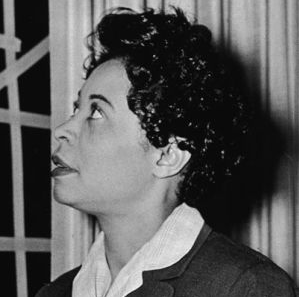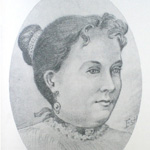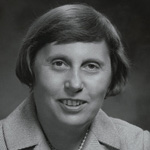Every year, the National Women‚Äôs History Project¬†honors a diverse range of women in order to¬†”draw strength and inspiration from those who came before us.” These women have contributed to American society in a variety of ways, and the NWHP strives to include these women in our collective history. This year’s theme is¬†‚ÄúWorking to Form a More Perfect Union: Honoring Women in Public Service and Government.‚Äù
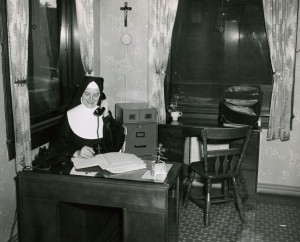
Early in her career, a young and habited Sister Mary Madonna Ashton, CSJ, worked at St. Mary’s Hospital in Minneapolis, MN, to establish an outpatient department.
Sister Mary Madonna Ashton CSJ (1923-present) is the oldest living recipient to be honored as part of Women’s History Month. Sister Mary served as president and CEO of St. Mary’s hospital in Minneapolis, U.S, and founded St. Mary’s Health Clinics, which provide free healthcare to those in need. She was later the commissioner of Health for Minnesota, an appointment that was opposed by many due to her lack of formal medical training. However, in the eight years of this role, Sister Mary addressed smoking and AIDS, taking on the tobacco industry in what would become a landmark legal battle. More recently, Sister Mary has focused on those in Minnesota who are uninsured, setting up neighborhood clinics
Daisy Bates (1912-1999) was an American civil rights activist, journalist, lecturer and publisher. Having learnt that three local white men had murdered her birth mother, Daisy was from the beginning determined to make a change in racially segregated Arkansas. Along with her husband, Daisy set up the Arkansas State Press in 1941, running stories about civil rights and the achievements of black Arkansans. During the same period, Daisy joined the local branch of the NAACP (National Association for the Advancement of Colored People), becoming the President of the Arkansas branch in 1952 at the age of 38. During the desegregation of Little Rock (Arkansas) schools, she guided and advised the first nine students that attempted to enrol in a previously all-white high school in 1957. With her support, they were eventually enrolled and remained in the school for a year, opening doors that had been previously closed to African American students.
Isabel Gonz√°lez (1882-1971) was involved in a pivotal United Saes Supreme Court case in 1904, which played a key role in securing U.S. citizenship rights for fellow Puerto Ricans. Having arrived in New York young, unmarried and pregnant, Isabel was unable to marry the father of her child who had been refused entry due to strict immigration laws. In the 1904 court case, she brought issues around the citizenship status of Puerto Ricans in the U.S. to light. Having gained her citizenship, Isabel wrote letters to the New York Times in an effort to further publicise the realities of immigration and actively pursued the cause. Through her efforts, Puerto Ricans are official U.S. citizens with the same rights as any other American.
Ella Grasso (1919-1981) was America‚Äôs first woman Governor. Demonstrating an early interest in public service, Ella became involved in the Democratic Party in Connecticut soon after completing her university education, first elected to the state General Assembly in 1952. In 1975, she defeated her Republican competition to become Connecticut‚Äôs‚Äìand indeed the United States’‚Äìfirst women governor elected in her own right. Having implemented economic changes and bolstered by a budget surplus in the state, Ella funded many social programs in her second term, aiding impoverished communities. Ella continues to serve as an inspirational role model for women in politics today, having never lost an election and serving her state as a tough but socially aware politician.
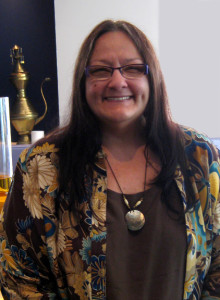
Suzan Shown Harjo (Cheyenne-Muscogee) is an author, Native American policy maker, activist, and poet.
Suzan Shown Harjo (1945-present) is an advocate for Native American rights. A poet, lecturer, curator, writer and policy advocate, Suzan has helped Native People’s reclaim more than one million acres of tribal lands. Having moved to New York City as a teenager, Suzan co-produced the first Native American news show in the U.S. Following a move to Washington D.C. in 1974 with her husband, she started working as a legislative liaison for two law firms representing Indian rights, and in 1978 was appointed by President Carter as a Congressional liaison for Indian affairs. During this position, she advocated Native American land claims and voting. Throughout her life, Suzan has worked tirelessly to support Native American rights to traditional hunting and fishing, ensured that Native American children were educated, highlighted issues of health within Native American communities and continued to work on issues of repatriation of sacred items housed in museums. Suzan received the Presidential Medal of Freedom, the highest civilian honor, on the 24th of November 2014.
For more inspirational women, have a look at our past Heroine Quilts (2016’s is coming in March!). Also, check out Podbean or iTunes for all our Girl Museum podcasts. ¬†And if you like what you hear, consider becoming a patron to help support future productions of GirlSpeak.
-Sarah Raine
Junior Girl
Girl Museum Inc.
